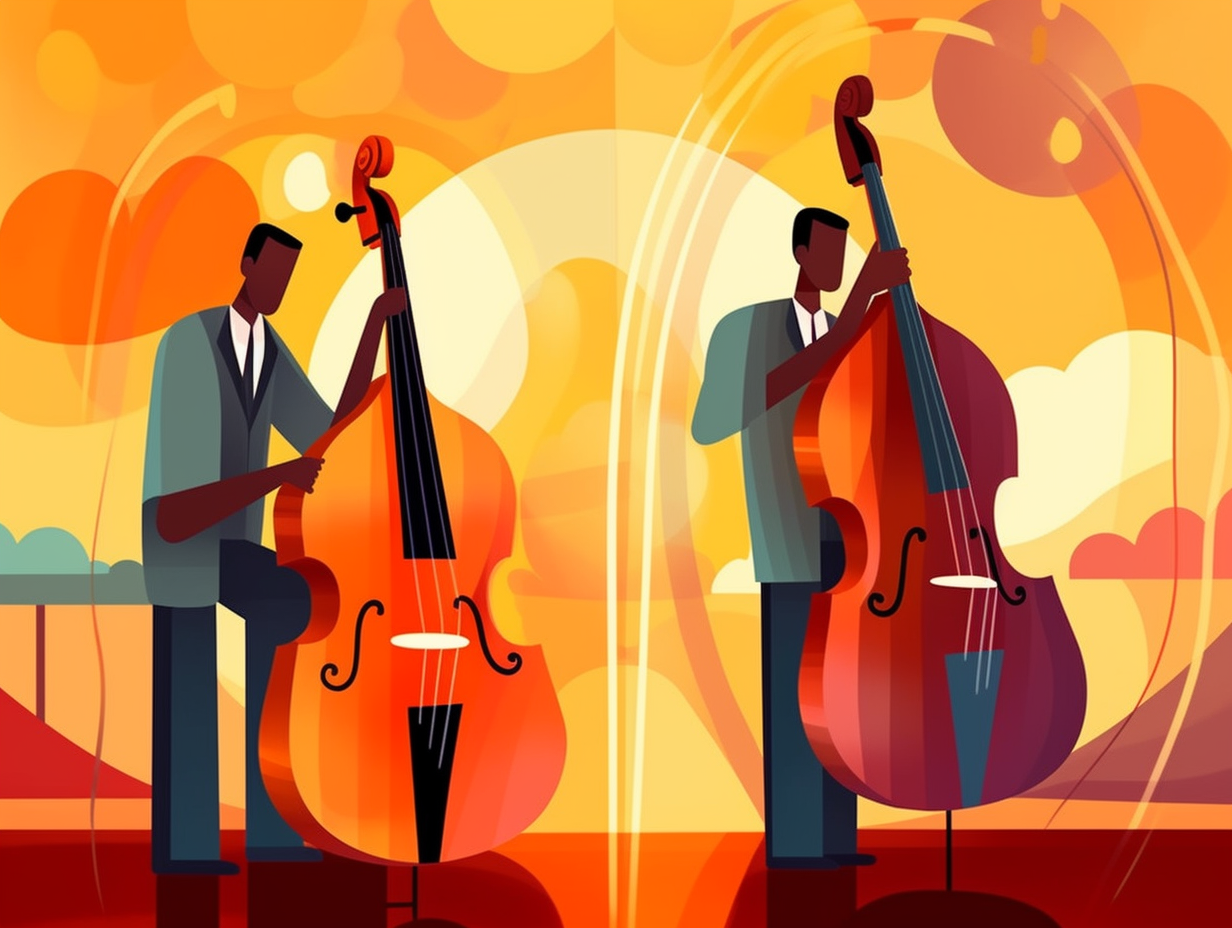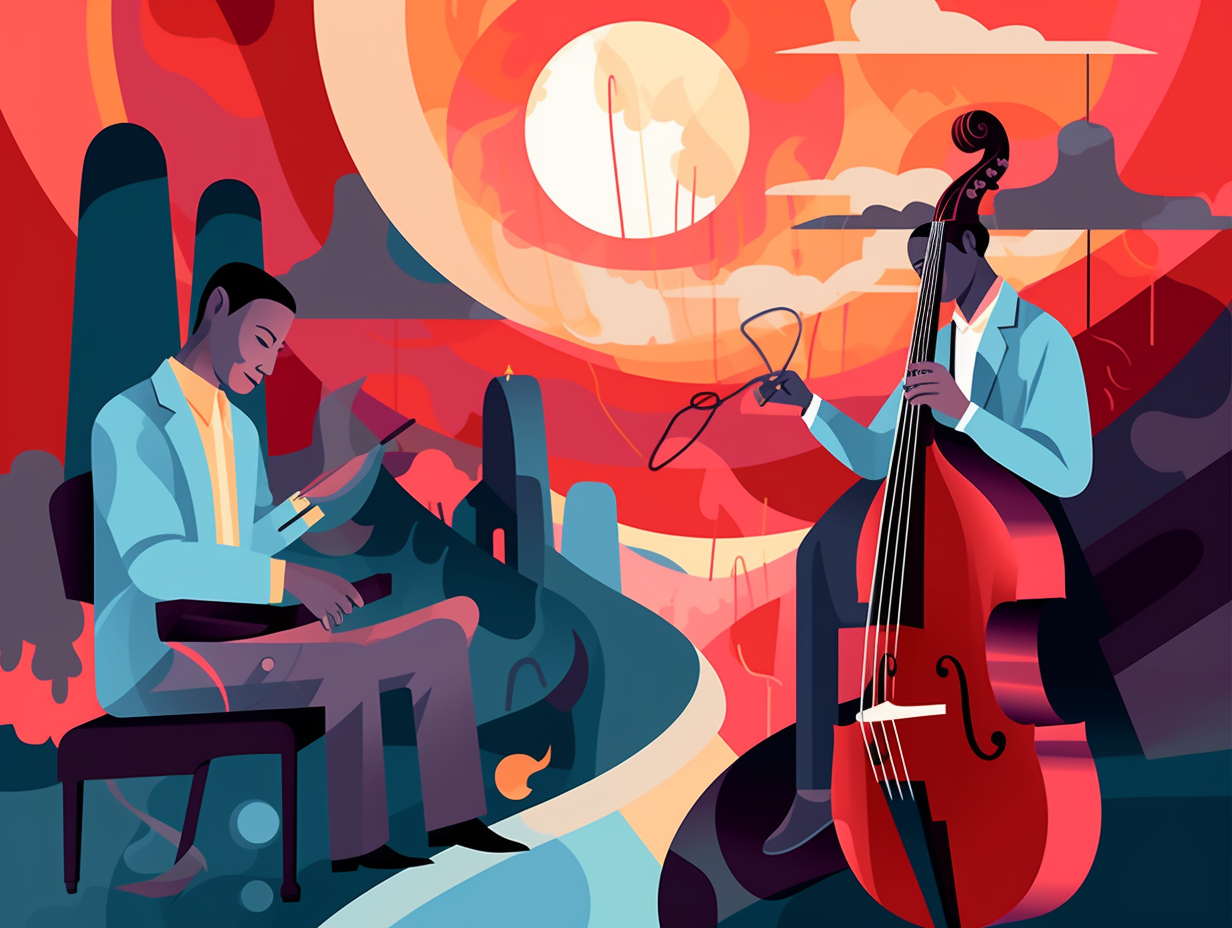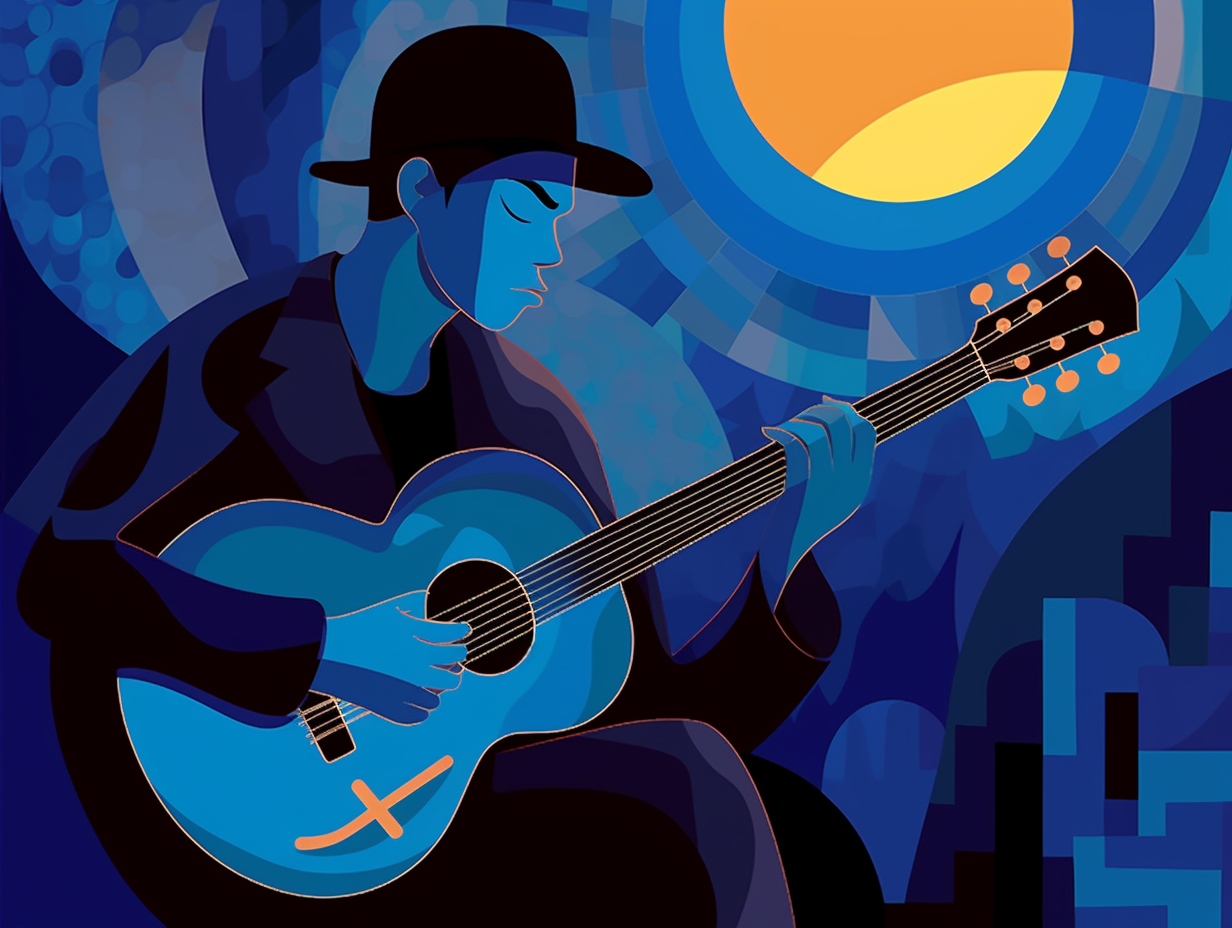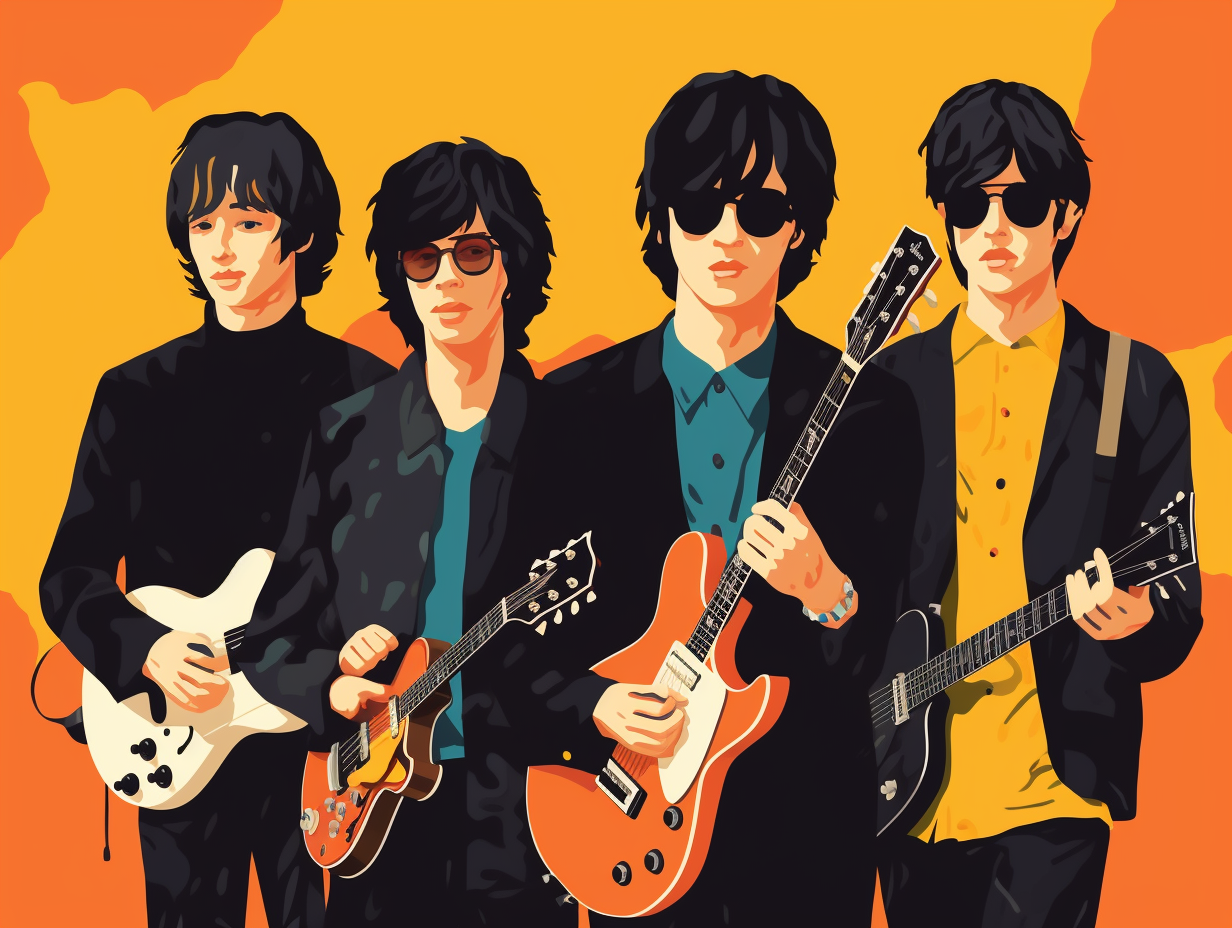12 Fascinating Fun Facts About the Double Bass: Discover the Secrets Behind This Mighty Instrument

1. The Double Bass: A Giant with a Passion for Bass-ics
When the double bass throws a concert, it's always a low-key affair – it just can't resist a deep and enjoyable rumble: But seriously, did you know that it's the only modern bowed string instrument tuned in fourths, notated an octave higher than it actually sounds, and is the largest in the orchestra – standing at a towering six feet tall? Quite the musical giant, with a penchant for the bass-ics!
Source => classicfm.com
2. Part Viol Family, Part Violin Family: A Crafty Identity Blend
If the double bass were a distant cousin crashing a family reunion, it might try to blend in with the viol family, cozying up to the viola da gamba with its sloping shoulders and flat back: However, this crafty instrument is actually a member of the modern violin family, sharing a similar internal construction and boasting the title of the largest, lowest pitched stringed star at the party, outshining the cello by reaching a minor sixth, an octave, or a ninth lower.
Source => en.wikipedia.org

Did you know that the superhero of the cello world, Antonio Stradivari, revolutionized the instrument's design in the 18th century? Discover how his Midas touch changed classical music forever!
=> Fun Facts about The-Cello
3. Poplar Wood: The Bass Star of Yesteryear Strikes Back
They say good things come in old packages, and it seems the lumber industry followed suit: poplar wood, once the star of 17th and 18th-century double basses, is experiencing a tree-mendous comeback for its favorable working qualities and deep, mellow sound.
Source => bryantbasses.co.uk
4. Tuned in Fourths: The Bass Ain't Baroque and Doesn't Need Fixing
If it ain't Baroque, don't fix it – especially when it comes to tuning the granddaddy of all strings, the double bass: The double bass stands out as the only modern bowed string instrument tuned in fourths, unlike its violin family peers that are tuned in fifths, giving it that deep, rich tone we know and love – and while four strings are the norm, some rare rebels carry the bass line on five or six strings.
Source => en.wikipedia.org

5. Double Bass Stances: More than Meets the Yoga Mat
In the world of double bass playing, there are more stances than yoga classes at a suburban fitness center! From the "Lean-N-Lift" to the "Groovy Gumbo Grab," these varied positions often attract die-hard disciples claiming their method is the Beethoven of bass technique: In reality, there are at least a dozen different ways to stand while playing the double bass, and each has its own merits. The key to success for each musician is to embrace multiple techniques, allowing them to find the perfect harmony of methods best suited to their instrument and individual style.
Source => doublebassblog.org
6. Wand-like Bows: A Journey to Bass Ollivanders
Choosing a bow for your double bass is like picking a wand at Ollivanders – you just wait for the bow to choose you, or maybe just your style of music: Double bass players can opt for a French or German bow, based on personal preference or the music genre they're playing, with some even mastering both for versatile performances. Wooden bows, however, are delicate creatures, often stored in quivers or hooks to safeguard their fragile existence.
Source => gollihurmusic.com
7. Bass-ic Backbone: From Orchestra Rhythm to Solo Stardom
It's a real "bass" of operations: this gargantuan stringed wonder not only takes the load as the backbone of the orchestra's rhythm, but also moonlights as a soloist, starring in musical compositions designed specifically to feature its deep, voluminous charm.
Source => philharmonia.co.uk
8. Genre Jumper: More than Just Classical Grooves
Move over, bass guitar – there's a granddaddy of groovy low-end plucking in town, and he moonlights in tuxedos at the symphony: The double bass, tuned uniquely in fourths (E1, A1, D2, G2), is the only modern bowed string instrument to do so, resulting in a deeper, richer tone that jams in genres beyond the orchestra, including jazz, blues, rockabilly, country, bluegrass, tango, and folk music.
Source => en.wikipedia.org
9. Pizzicato Playground: A World of Sonic Possibilities
Hey bass players, are you feeling plucky today? With a stroke of strings and an air of mystery, the double bass enters the pizzicato parlor with options-a-plenty: There is no one definitive way to play pizzicato on the double bass; players can choose to strike the string with the side of the index finger, lay the middle finger over the index finger for more arm weight, or alternate between the first and middle fingers for faster tempos, all affecting the balance of harmonics and overtones for a symphony of sonic possibilities.
Source => notreble.com

10. Lowest Notes: Holding the Beer and the Bass
When you think your bass is low enough, then comes along a double bass to say, "Hold my beer": The lowest note on a double bass can vary, with some reaching down to a low C or even a low B, outdoing the typical open E string and making this instrument a bass-ically essential foundation in genres like classical, funk, country, metal, and jazz.
Source => fuelrocks.com
11. Stance Debates: The Great Bass-ics Battle
Much ado about stance: Double bass players could give college debate teams a run for their money, as they fiercely defend their favorite of at least a dozen standing stances, some believing theirs is the "only method," while the most harmonious bassists keep an open mind and mix 'n' match methods that best suit their approach, size, and instrument.
Source => doublebassblog.org
12. Dating Profile: Backbone and Harmonic Heart
If the double bass had a dating profile, its bio might read: "I may be a little different from the rest of my family, but trust me, I've got the backbone to hold us together and a heart of harmonic steel." Here's the deal: the double bass is the only modern bowed string instrument tuned in fourths rather than fifths, enabling a comfier hand position and eliminating the need for any awkward stretches. Plus, its modern steel strings help create crystal-clear tones in higher positions on the lower strings. This unique beast keeps things groovy across classical music, jazz, blues, rock and roll, psychobilly, rockabilly, and bluegrass!
Source => cs.mcgill.ca
Related Fun Facts




















